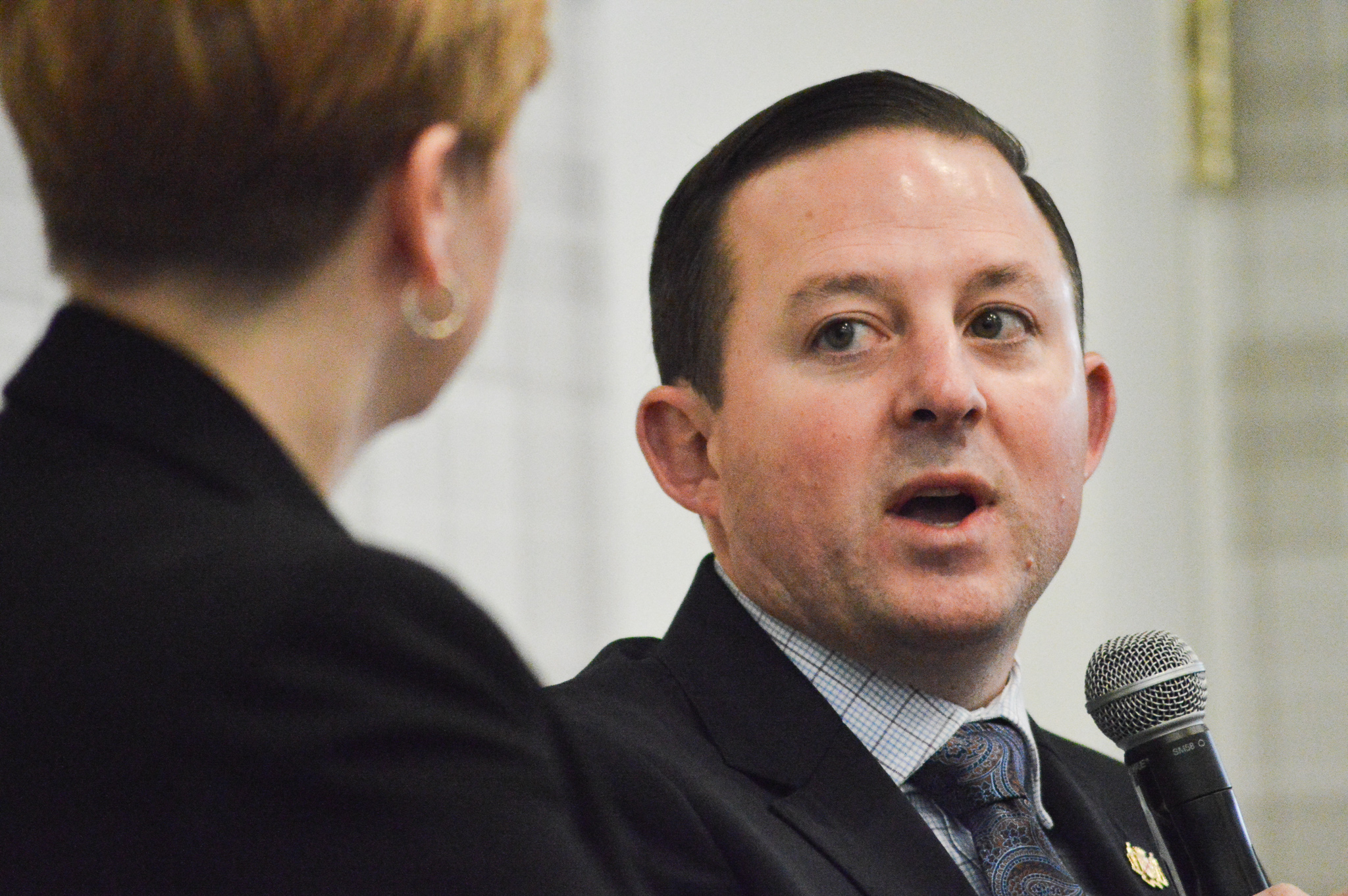ANNAPOLIS – Democratic leaders unveiled a sweeping new energy plan for Maryland on Monday, one that would make it easier to build new energy plants and other power projects in Maryland.
If passed, the legislation could mean more renewable energy, nuclear power and potentially natural gas in the state.
“We need to consider alternative sources of energy generation to alleviate stress on our power system,” House Speaker Adrienne Jones, a Democrat from Baltimore County, said at a press conference. “It is this work that will protect Maryland energy consumers, that will drive down energy costs, and that will ensure that our families keep the lights on.”
The legislation comes amid high and rising utility bills, and as the state tries to meet its clean energy goals and keep electricity affordable for Marylanders. Lawmakers backing these bills want to produce more energy in Maryland instead of relying on imports from other states, but Republicans are dubious that the plan would lower Marylanders’ utility bills.
“I was extremely underwhelmed by the package of bills that they discussed today,” Senate Minority Leader Stephen Hershey, a Republican from Caroline, Cecil, Kent and Queen Anne’s Counties, told Capital News Service after the press conference. “I think that if you are a Marylander that is concerned about high utility rates … there’s nothing that was discussed today that is going to help that situation.”
The legislation focuses too much on long-term solutions, he said, and puts too much faith in solar, wind and battery storage. He said he had hoped that there would be a push to bring new gas-fired power plants into the state to make up for energy losses from recent power plant closures.
“I didn’t hear anything specifically that would make me believe that there’s any urgency in addressing Maryland’s energy crisis,” he said.
But the lawmakers behind the legislation are hopeful it will help lower utility bills, boost energy production in Maryland and promote cleaner energy.
“Together, we will secure greater affordability, greater reliability and greater predictability of Maryland’s energy grid,” said Senate President Bill Ferguson, a Democrat from Baltimore City.
Under the Next Generation Energy Act, Ferguson said, the state’s regulatory commission would be required to solicit bids for and approve new energy projects in Maryland. The bill would streamline permitting and siting for these projects to get them up and running quickly.
Natural gas plants are on the table for these energy projects, he said, though renewables like solar and wind are the top priority. The bill could also expand nuclear energy in the state.
“Natural gas has to be considered,” Ferguson said.
New natural gas plants would have to be designed to be convertible to clean fuels, like hydrogen, and to use carbon capture, as soon as the technology allows. Lawmakers want to see energy projects in the pipeline “as quickly as possible,” Ferguson said, setting a target for the end of this year.
The package would also add standards and consumer protections for rooftop solar and build new solar and battery storage projects in the state. It would require utilities to plan how they will reduce their greenhouse gas emissions without causing rates to skyrocket or running into a reliability crisis. It would also revive a government office dedicated to analyzing and predicting the future of energy in Maryland. Bill co-sponsor Sen. Katie Fry Hester, a Democrat from Howard and Montgomery counties, said the office can support the state through its transition to clean energy.
“What we’ve seen in the last five years is the advancement of technology that is more energy-consuming than we could have ever imagined,” Ferguson said. “We’ve seen electrification, which has been encouraged, but should be for many, many reasons, which has put additional strain on the grid . . . That has led to a mismatch in supply and demand. That’s the reason we’re seeing these increased prices, and let me tell you, it’s unacceptable.”
“We have to act urgently to lower prices for Marylanders,” he said. “That’s what this package is about . . . everyday Marylanders having lower bills.”

